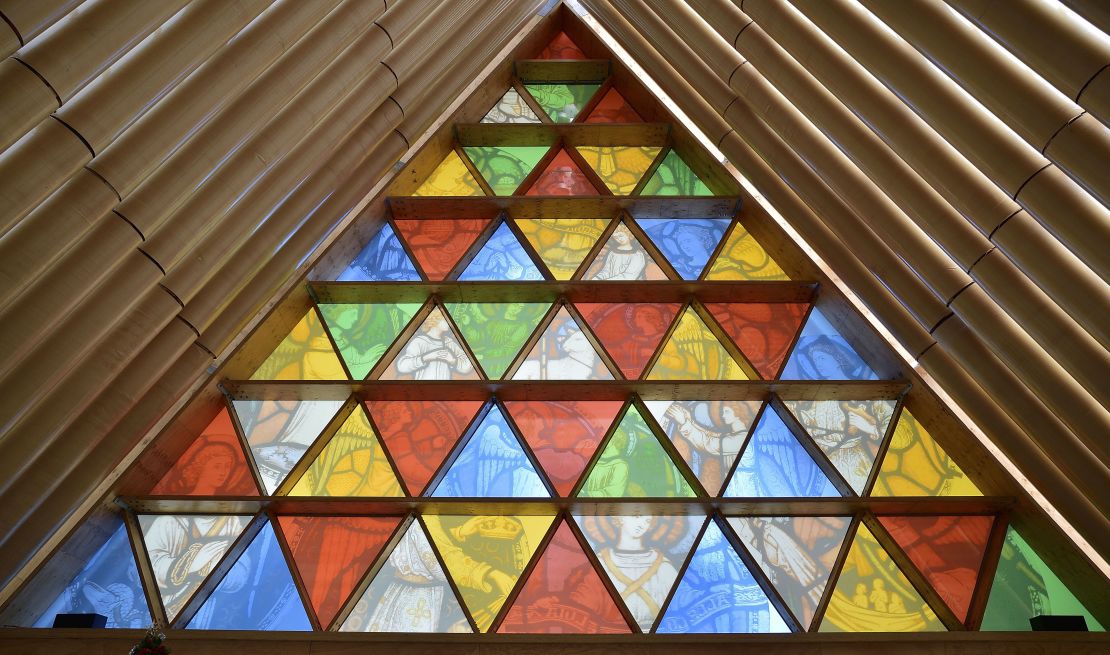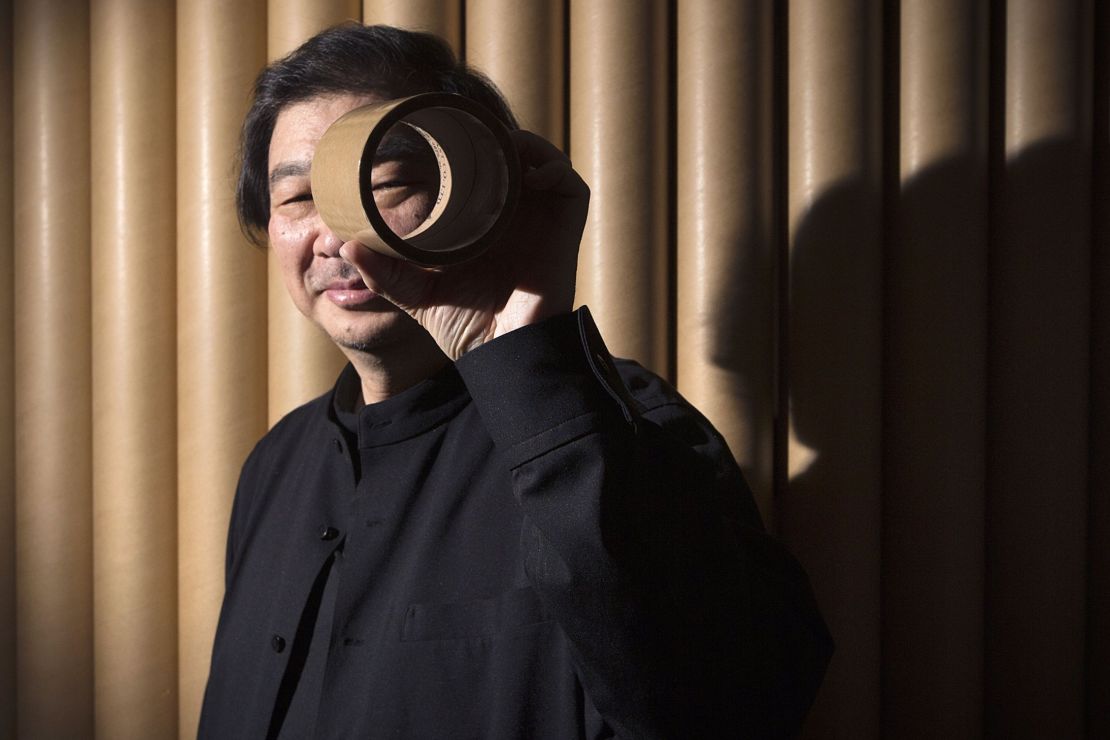Story highlights
Japanese architect Shigeru Ban is one of the world's great humanitarian architects
His signature works employ simple recyclable materials to help victims of natural disaster
Winning top architecture award has given Ban more freedom to choose projects
It has been over a year and a half since Japanese architect Shigeru Ban won architecture’s highest award. Now, the 58-year-old’s body of work poses a peculiar question: how long can paper houses last?
Ban’s signature humanitarian buildings – constructed using cardboard tubing, designed and built fast in response to natural catastrophes, and often not intended for indefinite use – have continually outlasted their period of need.
“Temporary” paper log houses, constructed in response to earthquakes in Turkey and Haiti, were inhabited for months and years, even after rebuilding efforts began providing for more permanent residences.
In Chengdu, China, an elementary school built as a stop-gap after a 2008 earthquake is still in daily use. And his cardboard church in Kobe, Japan, built for the city’s Catholic community in the aftermath of a 1995 earthquake, was shipped to Taiwan in 2008, where it still stands.

But since he received the 2014 Pritzker Architecture Prize – inducting him into a prestigious elite that includes the names Oscar Niemeyer, Frank Gehry and Norman Foster – Ban says he’s noticed new interest in his work. (A new edition of Ban’s Complete Works has recently been published.)
Offers have recently flooded in from commercial property developers to design luxury complexes. His interiors at New York’s Cast Iron House have shown his capabilities on a grander budget, with apartments on sale last year for between $5 million and $12 million.
In London, Ban’s commissioned design for millionaire property entrepreneur John Curran, in the shadow of Tower Bridge, will likely become the capital’s most impressive timber home, if planning approval is granted later this year.
But many less wealthy individuals across the world – from Nepal to the Philippines – are already living in structures designed by the Japanese architect.
For these low cost houses, which now find themselves part of the blooming cultural legacy of a Pritzker laureate, the future is often unclear. Acclaim is no guarantee of a protection, even in less volatile environments, and architectural conservationists decry the loss of scores of Frank Lloyd Wright houses and many of skyscraper pioneer Louis Sullivan’s greatest monuments.

For Ban, construction is the easy part. In disaster zones, he is freed of the responsibility of seeking government approval for structures, provided he can vouch for their safety by his own calculations, and by working with a structural engineer.
Talking during a trip to Paris, Ban says there’s no danger of his paper structures crumbling. “There is no difference between paper and wood,” he claims, explaining that timber, if used improperly, will not last long either.
“Waterproofing and fireproofing is a technical issue which can be solved, because it is an industrial material.”
From his perspective: “There is no difference between temporary and permanent.” Instead, the expiration date on his buildings – such as his recent rubble-walled housing designed this summer after the catastrophic earthquake in Nepal – is set by the client, which is usually the local government authority charged with disaster response efforts. These bodies dictate how long any relief structure will stand after an event.
But, as with the school in Chengdu, governments are loathe to evict occupants from perfectly sound buildings. As the architect made clear this June, in a speech to students at his alma mater, Cooper Union’s School of Architecture in New York, concrete construction is no more a guarantee of long life, and poorly designed and unloved concrete buildings are being demolished across the world.
Here, Ban’s elegant, minimal design could be his creations’ saving grace: “Even if a building is made out of paper, if people love them, then they will become permanent,” he said.
Life after Pritzker
Ban says the prize has brought changes. There’s a new burden of responsibility that comes with taking a place among architecture’s leading figures, he admits, but a freedom too, to pursue the projects he wants, and to say no to others.
Ban is no stranger to large corporate and cultural buildings: a new headquarters for Swiss watchmakers Swatch and Omega is in the works; he’s designed a tea plantation-inspired terminal for an airport at the foot of Mount Fuji; and his wooden-sided art museum in Aspen opened last summer, to a mixed reception from local billionaires.
Ban says in the past he has tried to “balance” his pro bono work on humanitarian causes with necessary and interesting work elsewhere. But he now feels that the two are one and the same. “Just that this is a different type of requirement: either for the rich client or the victim of an earthquake. The only difference is whether I’m paid or not, otherwise the project is a project.”
He says it’s hard to say whether big money projects directly inform his work for the dispossessed. But in both he maintains a priority on sustainability and taste for geometric forms in timber carpentry and paper tubes.
The booming interest from monied developers has not changed his perspective, he says, and he’s not about to start churning out “big commercial buildings.”
“I don’t want to make my office bigger,” says Ban, whose Pritzker win was viewed by many as a pledge of the industry’s commitment to a future where social consciousness is valued alongside glitzy spectacle.
“I don’t want to be too busy. I need enough time to design everything by myself, to control the quality, as well as work in disaster areas.”
Ban says his personal priorities are the same. “Even before the award, the importance of my projects has nothing to do with the scale of the project, nothing to do with the budget of the project. Challenging projects interest me, not the high budget or not the big project.”









